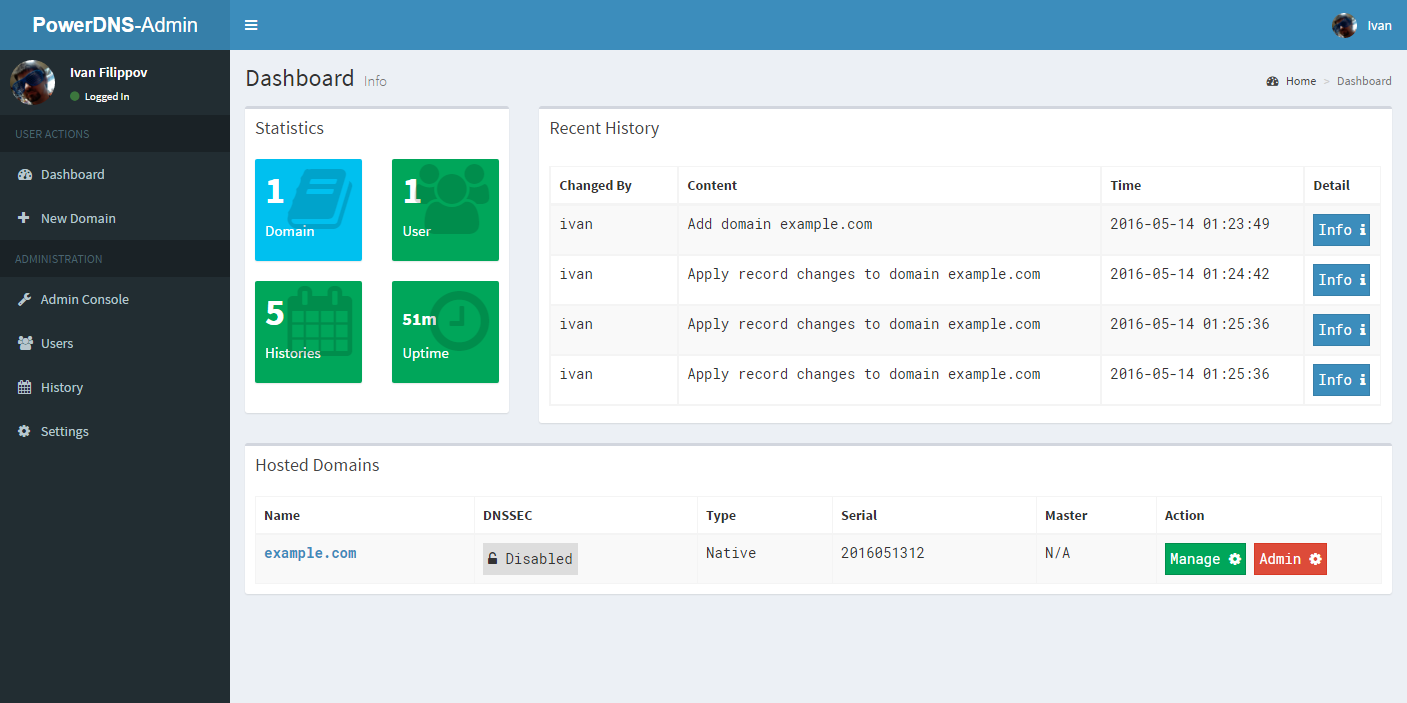mirror of
https://github.com/cwinfo/powerdns-admin.git
synced 2025-09-18 00:02:31 +00:00
6c8a3ac36c370025fedba9a1b09cead8ac08dffa
For a setting to be useful, the code has to be able to make sense of it anyway. For this reason it makes sense, that the available settings are defined within the code, rather than in the database, where a missing row has previously caused problems. Instead, settings are now written to the database, when they are changed.
So instead of relying on the database initialization process to create all available settings for us in the database, the supported settings and their defaults are now in a `defaults` dict in the Setting class. With this in place, we can stop populating the `setting` table as a part of database initialization and it will be much easier to support new settings in the future (we no longer need to do anything to the database, to achieve that).
Another benefit is that any changes to default values will take effect automatically, unless the admin has already modified that setting to his/her liking.
To make it easier to get the value of a setting, falling back to defaults etc, a new function `get` has been added to the Setting class. Call it as `Setting().get('setting_name'), and it will take care of returning a setting from the database or return the default value for that setting, if nothing was found.
The `get` function returns `None`, if the setting passed to the function, does not exist in the `Setting.defaults` dict - Indicating that we don't know of a setting by that name.
PowerDNS-Admin
A PowerDNS web interface with advanced features.
Features:
- Multiple domain management
- Domain template
- User management
- User access management based on domain
- User activity logging
- Local DB / LDAP / Active Directory user authentication
- Support SAML authentication
- Google oauth authentication
- Github oauth authentication
- Support Two-factor authentication (TOTP)
- Dashboard and pdns service statistics
- DynDNS 2 protocol support
- Edit IPv6 PTRs using IPv6 addresses directly (no more editing of literal addresses!)
Running PowerDNS-Admin
There are several ways to run PowerDNS-Admin. Following is a simple way to start PowerDNS-Admin with docker in development environment which has PowerDNS-Admin, PowerDNS server and MySQL Back-End Database.
Step 1: Changing configuration
The configuration file for developement environment is located at configs/development.py, you can override some configs by editing .env file.
Step 2: Build docker images
$ docker-compose build
Step 3: Start docker containers
$ docker-compose up
You can now access PowerDNS-Admin at url http://localhost:9191
NOTE: For other methods to run PowerDNS-Admin, please take look at WIKI pages.
Screenshots
Languages
Python
50.5%
HTML
44.5%
JavaScript
3.4%
CSS
0.9%
Dockerfile
0.4%
Other
0.2%




